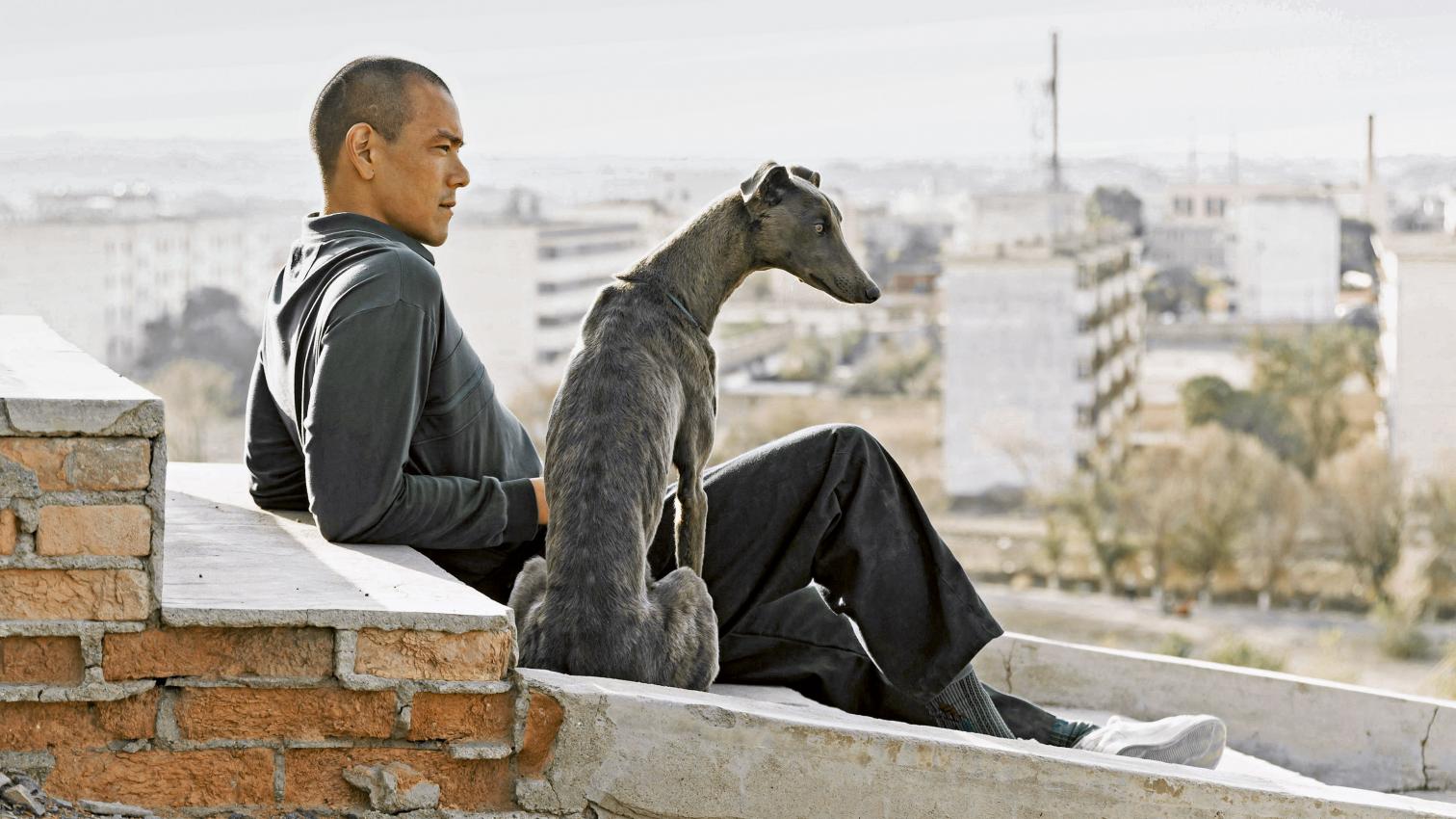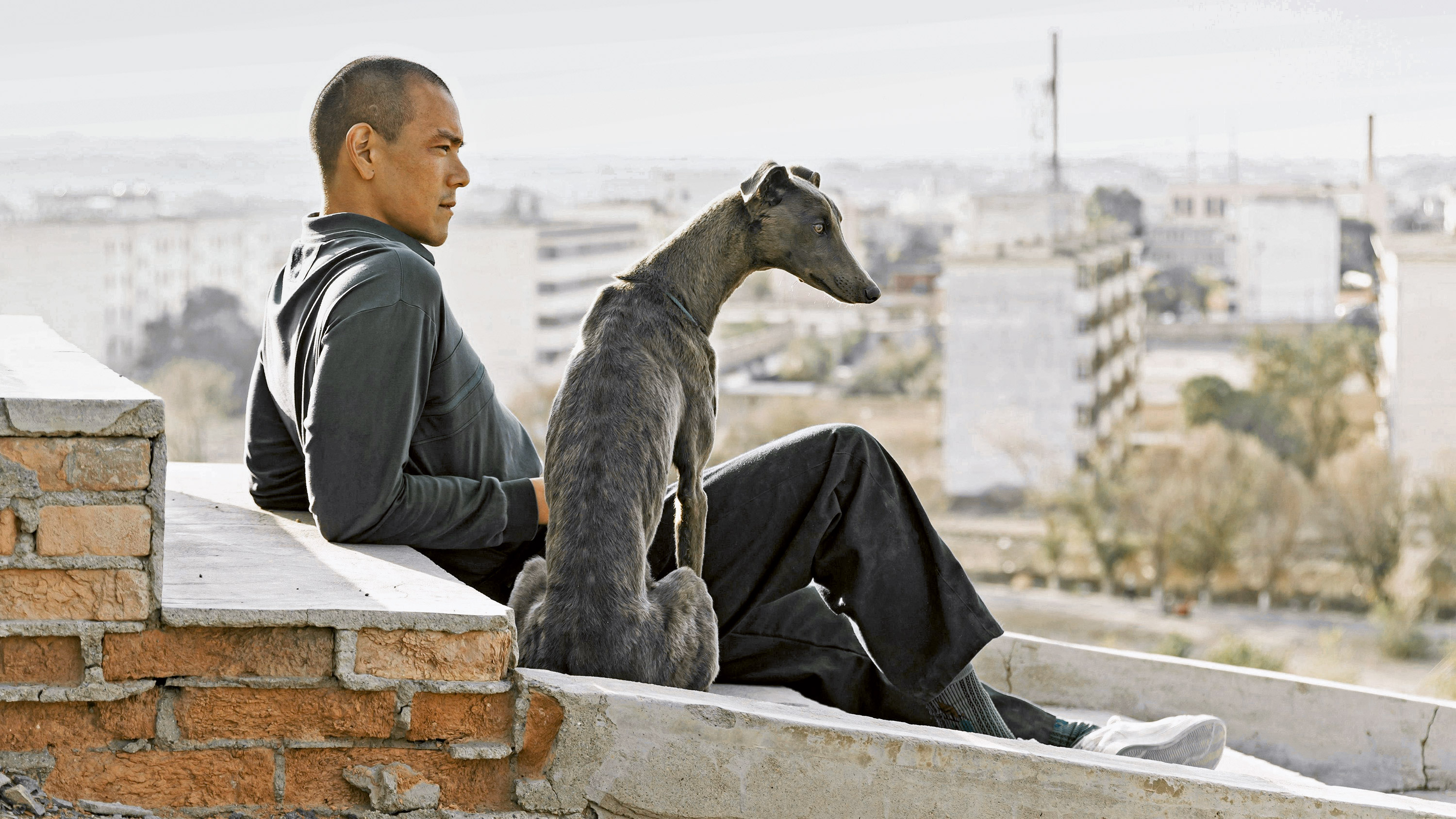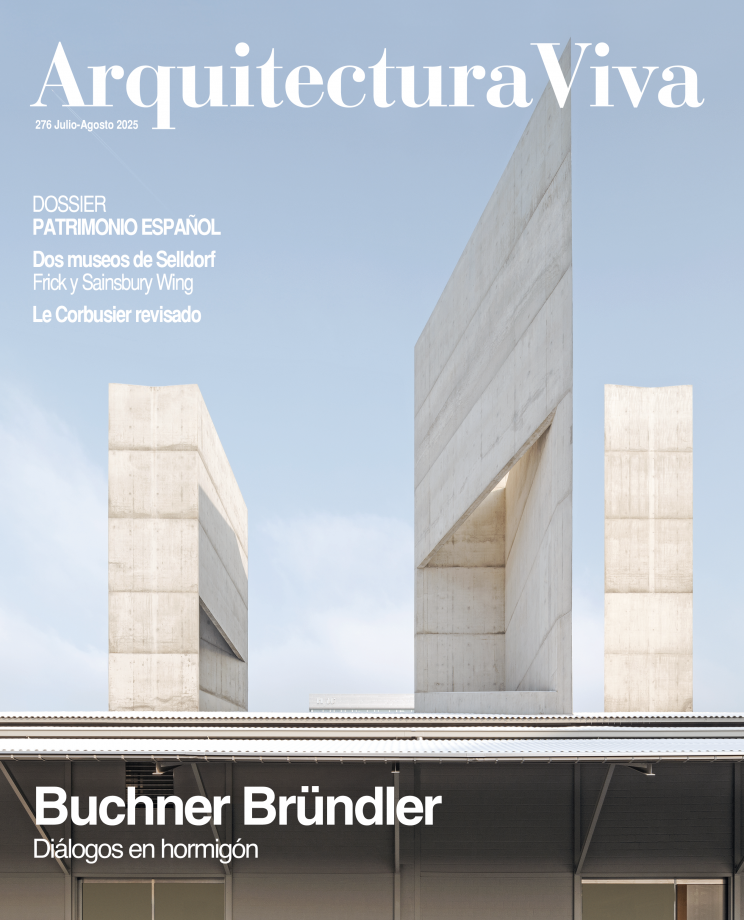
China’s transformation in the 21st century can be felt on a visit there, as chronicled in ‘Six Watercolors’ (AV Proyectos 130), but is also documented through its cinema, which since the dazzling appearance of Zhang Yimou with Red Sorghum (1987) has seen the rise of filmmakers who with a combination of artistic excellence, technical skill, and international dissemination have become cultural ambassadors of their country. Two recent pictures, selected at the Cannes Film Festival and now showing in Spain, attest to the physical and cultural mutations that the Middle Kingdom has undergone.
Black Dog and Caught by the Tides are by Guan Hu (Beijing, 1968) and Jia Zhangke (Fenyang, Shanxi, 1970), members of the so-called ‘urban generation’ of independent film, a movement creatively committed to addressing the country’s dramatic economic and social changes, the impact of massive urbanization, and the powerlessness of ordinary or marginal people oft-represented through documentary techniques and by a profusion of non-professional actors. Landscape and architecture figure prominently in the two movies, and in both as settings of lives gone adrift, whether steppes beaten by clouds of dust or valleys flooded by hydraulic projects, whether interminably repeated blocks or cities undergoing demolition to be rebuilt in accordance with directives more in tune with the modernity that has come upon China.
Black Dog, which won the ‘Un certain regard’ prize in Cannes, has been described as a drama or a western, but Guan Hu’s creation is also an admirable testimony of the effects wrought by the gale of change on a remote locality on the outskirts of the Gobi Desert. At a time immediately preceding the Beijing Olympic Games, the population has been invaded by wild dogs, and the exconvict Lang, returning to a ghostly town, enlists in a canine-capturing patrol but develops a fondness for a black dog, and together they traverse the arid landscapes of the region in an at once tender and violent circular road movie. Interpreted by the Taiwanese actor Eddie Peng, the laconic Lang starrs in this fable of redemption filled with touches of poetry and humor reminiscent of Takeshi Kitano, amid hermetic buildings of concrete and identical windows that could have been designed by a disciple of Hilberseimer, half-ruined rural sheds and desolate, sandstorm-shaken landscapes. The cast of characters – which includes Jia Zhangke as head of the team tasked to catch stray dogs – composes an endearing and helpless fresco, in contrast with the Olympic pageantry shown on the town’s television screens.
Caught by the Tides, nominated for the Palme d’Or, likewise begins right before the Beijing Games, but the storyline reaches the pandemic years and the film depicts the past quarter-century of China in fragments, with material filmed in 2001, 2006, 2017, and 2022. Jia Zhangke, who in 2006 earned the Golden Lion in Venice with Still Life, goes back to its landscapes to tell the melancholy love story of Qiao Qiao – played by Zhao Tao, the director’s wife and muse – and Guao Bin, who age on screen and seek one another in a rare mix of documentary and fiction that elapses from the start of the century with humble dance halls, unasphalted streets, and Mao portraits to the current China of sophistication and luxury where the leading female character engages in dialogue with a humanoid robot, passing through the titanic construction of the Three Gorges Dam on the Yangtze River, with the accompanying demolition of cities that would find themselves underwater and the corruption in public-works contracts: a lyrical and multifaceted testimony of China’s metamorphosis, and an extraordinary formal experiment of cinematographic collage.
At the same time that both movies were premiered, the Cervantes Institute in Madrid presented ‘China 354,’ an exhibition of 354 short films, just a minute long, produced by Luis Cuenca in the course of a year in each and every one of the thirty Chinese provinces. Conceived as a portrait of a country in transformation, its almost six hours of videos on everyday life are not easily compatible with the attention span of the visitor moving along the twenty-four screens of the show, reminding us of the importance of montage as a tool of synthesis: by way of example, Albert Serra accompanied Andrés Roca Rey in the course of an entire bullfighting season, and succeeded in condensing his account in the two hours of Afternoons of Solitude.






